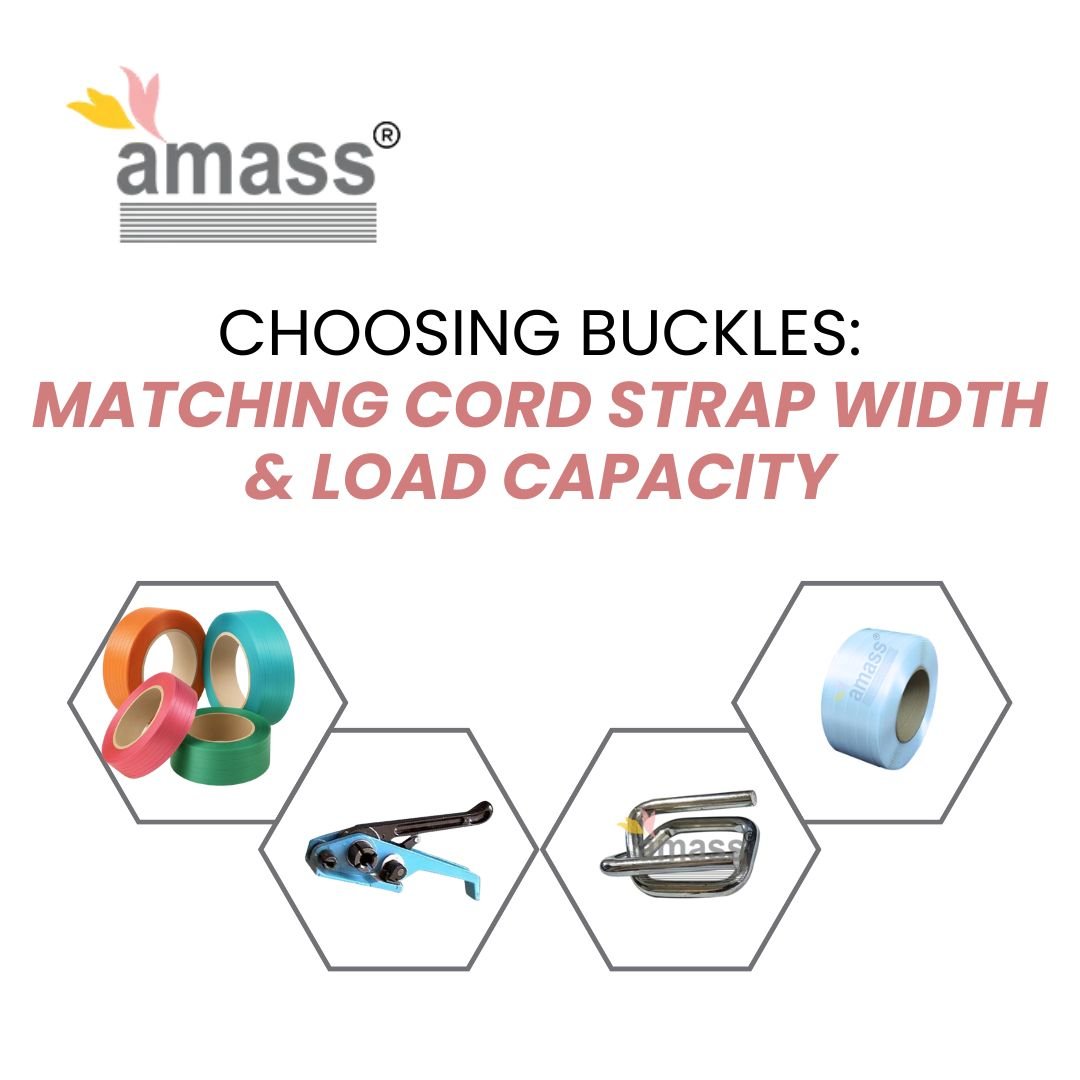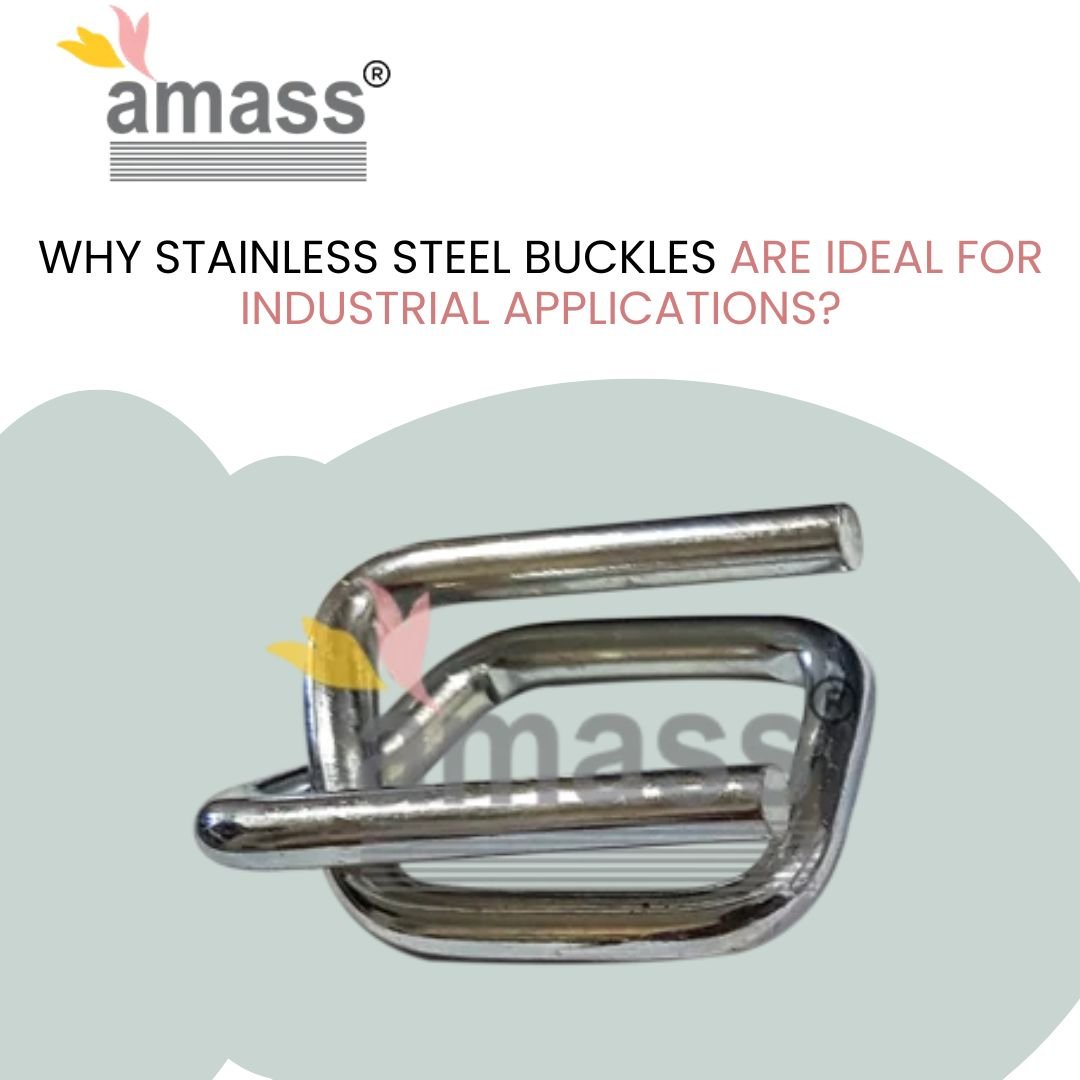Choosing Buckles: Matching Cord Strap Width & Load Capacity

Cost-Benefit: Cord Strap System vs. Traditional Cargo Securing
November 15, 2025Introduction
Your cargo shifted during transport because the buckle slipped. Or worse—it failed outright, snapping under load before the truck left the yard. The strap itself was plenty strong, but the buckle-to-strap mismatch killed joint efficiency and turned a 2,360-pound capacity system into a liability. Here’s the uncomfortable truth: most strapping failures happen at the buckle joint, not in the strap. Joint efficiency—the percentage of strap strength retained after buckling—ranges from a dismal 55% to an excellent 90% depending on how well you match buckle type, size, and material to your cord strap width and working load requirements. This guide shows you how to calculate system strength, select the right buckle for each strap width, and avoid the matching errors that lead to catastrophic load failure.
Understanding Cord Strap Specifications
Cord strapping comes in five standard widths, each engineered for specific load ranges. The 13mm width handles up to 485kg break strength and works for light bundling applications. The 16mm width jumps to 680kg capacity for mid-weight pallets. The 19mm option delivers 800kg strength for heavier cartons and industrial components. The 25mm strap provides 1,280kg capacity for large machinery and construction materials. The 32mm width—the heavy-duty champion—handles up to 2,360kg and secures the kinds of loads that would crush lesser systems.
Break strength measures how much force a strap can withstand before failing in laboratory conditions. The working load limit (WLL) is different—it’s the maximum safe load you should apply in real-world use, calculated as one-third of break strength to account for shock, vibration, environmental factors, and aging. A 25mm cord strap rated for 1,280kg break strength has a working load limit of roughly 427kg per strap.
Why Buckle Selection Determines System Strength
System strength is the actual performance you get when you loop a strap around a load and connect the ends with a buckle. It’s not the same as strap break strength because the buckle introduces a weak point. Joint efficiency expresses this weakness as a percentage: if your buckle achieves 70% joint efficiency on a strap with 1,000kg break strength, your system strength is only 700kg.
The formula is straightforward: System Strength = (Break Strength × 2) × Joint Efficiency. That multiplication by two accounts for the fact that you’re using a looped strap—both sides share the load. But if your buckle efficiency drops from 90% to 60% due to wrong sizing or poor-quality wire, you lose 30% of your securing capacity instantly.
Low-quality buckles bend under stress instead of holding firm, causing the strap to slip through the buckle or the buckle wire itself to deform. This creates slack in the system, which allows load movement, which generates more stress, which accelerates failure—a cascading problem that started with a bad buckle choice.
Types of Buckles for Cord Strapping
Wire Buckles
Standard wire buckles use unpainted steel wire formed into a rectangular frame with a center crossbar. The strap threads through the buckle, folds back on itself, and the tension holds everything in place through friction. These buckles are cost-effective and achieve 70-75% joint efficiency when properly matched to strap width.
Phosphated Buckles
Phosphated buckles feature a manganese or zinc phosphate coating that creates a rougher surface texture. This texture dramatically improves grip, especially in wet conditions or when loads experience high vibration during transport. Phosphated buckles are the preferred choice for woven cord strapping because the coating prevents the more pliable strap material from slipping through under stress. They deliver joint efficiency in the 75-85% range when sized correctly.
Galvanized Steel Buckles
Galvanized buckles use a zinc coating for corrosion resistance. The smooth finish works well with stiffer composite cord straps but offers less grip than phosphated options. These buckles shine in marine environments or chemical exposure scenarios where rust prevention matters more than maximum friction.
Heavy-Gauge Forged Buckles
Forged buckles use thicker wire and tighter bends to maximize strength. They’re engineered for the heaviest applications—32mm strapping securing industrial machinery, steel beams, or construction equipment. Premium forged buckles can achieve 85-90% joint efficiency, which means you retain nearly all of your strap’s rated capacity.
Matching Buckle Width to Strap Width
Buckle internal width must match strap width exactly. A 16mm strap requires a 16mm buckle. Use a 13mm buckle on a 16mm strap and the strap won’t thread properly—it bunches, twists, or fails to engage the friction surface. Use a 19mm buckle on a 16mm strap and the strap slides laterally inside the buckle frame, creating movement that reduces friction and allows slippage.
Here’s the standard pairing guide:
- 13mm strap → 13mm buckle (485kg capacity, light bundling)
- 16mm strap → 16mm buckle (680kg capacity, pallet securing)
- 19mm strap → 19mm buckle (800kg capacity, mid-weight industrial)
- 25mm strap → 25mm buckle (1,280kg capacity, heavy machinery)
- 32mm strap → 32mm buckle (2,360kg capacity, extreme loads)
Never mix widths. The performance penalty isn’t worth the convenience of using whatever buckles happen to be in stock.
Calculating Load Capacity Requirements
Start with the weight of your load. Divide by the number of straps you plan to apply—most palletized loads use two to four straps depending on height and center of gravity. This gives you the load per strap. Now multiply by three to account for the safety factor, which brings you back to the break strength you need.
Example: You’re securing a 1,200kg pallet with three straps. Each strap carries 400kg. Multiply 400kg by three for the safety factor: you need a strap with at least 1,200kg break strength. That means you should use 25mm cord strap (1,280kg) with matching 25mm buckles at 75% minimum joint efficiency.
If your buckle only achieves 60% joint efficiency because you bought discount hardware, your effective system strength drops to 768kg per loop—below the safe threshold. The math doesn’t lie, and neither does physics when your load shifts mid-highway.
Installation Best Practices
Thread the strap through the buckle with at least 6-8 inches of overlap. The tail must fold back parallel to the load-bearing section of the strap—no twists, kinks, or crossovers. Twisted webbing loses up to 50% of its strength, which destroys any benefit you gained from choosing the correct buckle.
Use a tensioner tool matched to your strap width. Manual tensioners work for low-volume operations; battery-operated tools deliver consistent tension and reduce operator fatigue in high-volume environments. Apply 70-80% of rated break strength during tensioning—less creates slack, more pre-stresses the strap and reduces shock absorption capacity.
Position the buckle where it won’t contact sharp edges during loading or transport. Metal corners, exposed bolts, and pallet stringers can abrade the buckle wire or strap, creating weak points that fail under dynamic loads.
Maintenance and Inspection
Inspect buckles before each use for bent wire, corrosion, or deformed geometry. A buckle that’s been over-stressed will show visible bending at the crossbar or frame corners. Discard it immediately—bent buckles lose 40% or more of their holding capacity and fail without warning.
Clean phosphated buckles with a wire brush to remove accumulated dirt, grease, or polyester fiber debris that reduces surface friction. Avoid solvents that strip the phosphate coating. Store buckles in a dry location away from ground moisture and chemical spills.
Replace buckles after they’ve been used five to seven times in heavy-duty applications. The repeated stress cycling weakens the wire even if no visible damage appears. In medium-duty use, buckles can handle 10-15 cycles before replacement becomes necessary.
Troubleshooting Common Issues
Slippage During Transport
Slippage happens when the buckle lacks sufficient friction to hold the strap under dynamic load. The most common causes are using standard wire buckles instead of phosphated types on woven strapping, contamination of the buckle or strap surface with oil or moisture, or mismatched widths that prevent proper engagement.
Buckle Deformation
If buckles consistently bend or deform, you’re either over-tensioning the strap during application or using buckles with wire gauge too light for the load. Switch to heavy-gauge forged buckles rated for your application.
Premature Strap Failure at Buckle
When straps break right at the buckle joint instead of mid-span, joint efficiency is too low. Calculate your actual system strength using the formula earlier in this guide and verify you’re achieving at least 70% efficiency. Anything below that threshold indicates buckle quality or matching problems.
FAQs
What’s the difference between joint efficiency and system strength?
Joint efficiency is the percentage of the strap’s break strength you retain after adding a buckle connection. System strength is the actual force required to break the looped strap-and-buckle assembly, calculated by multiplying strap break strength by two (for the loop) and then by joint efficiency percentage.
Can I use galvanized buckles with woven cord strapping?
You can, but phosphated buckles perform better. Woven strapping is more pliable than composite cord, so it needs the extra grip that phosphate coating provides to prevent slippage during vibration and impact.
How do I know if my buckles are sized correctly?
The strap should thread through the buckle with minimal resistance but no lateral play. If you can move the strap side-to-side within the buckle frame, the buckle is too wide. If you have to force the strap through with excessive effort, the buckle is too narrow.
What happens if I exceed the working load limit?
Exceeding WLL doesn’t guarantee immediate failure, but it dramatically increases risk. The safety factor exists because real-world conditions—sudden braking, potholes, load shifting—create forces higher than static weight. Operating at or near break strength eliminates your margin for these dynamic loads.
Should I replace buckles after every use?
Not necessarily. Inspect buckles visually before each use and replace any showing wear, deformation, or corrosion. For heavy-duty applications, plan on replacing buckles after five to seven cycles. Medium-duty use extends that to 10-15 cycles.
Conclusion
Match buckle width to strap width, choose buckle type based on strapping material and environment, calculate system strength using joint efficiency, and never compromise on buckle quality to save a few dollars. Your load security depends on getting this right every time.
Amass Strap engineers complete cord strapping systems with precision-matched buckles and high-tensile polyester cord straps that deliver 80%+ joint efficiency. Our phosphated and galvanized buckles are tested to international standards and sized for exact compatibility with every strap width we manufacture. Visit amass-strap.com to request a system strength calculation for your specific application, download technical specifications, or order samples that prove the difference quality matching makes rence quality matching makes.



